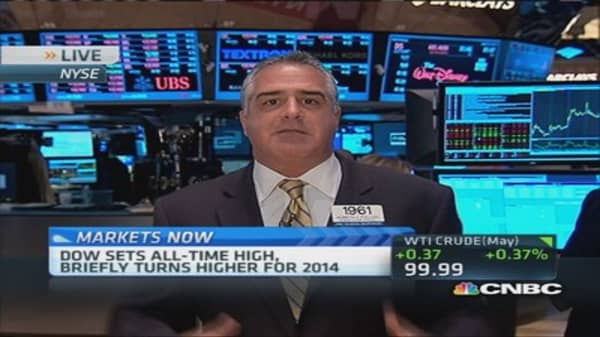Read MoreNYSE floor trader blasts high-frequency trading
It has raised huge "conflict of interest" issues, while reducing and fragmenting liquidity. Who exactly is conflicted? The list is long and that, my friend, is exactly where this conversation should go.
'We have allowed technology to control us'
Opportunities for gaming the system have never been greater — and that is different than being "rigged"as Michael Lewis has chosen to call it. We have allowed technology to control us vs. us controlling the technology and this is key to the conversation about what we as a country want our markets to be.
The SEC is charged with overseeing more than 12,000 publicly-traded companies, more than 10,000 investment advisors, 6,000+ broker dealers with branches around the country...
That leaves you to wonder: Do they have adequate resources and can they really monitor trading in a world gone mad?
Today, the 12 exchanges are known as "lit markets" because they are transparent; meaning, you can see supply and demand — bids and offers. The 80+ alternative venues or "dark markets" (dark pools, internalization engines, crossing networks) are described this way because they are not transparent — nor are they regulated like an exchange. For them to be successful, they must use the information from the lit markets in order to the price stocks correctly.
This competition has given birth to complex algorithms and order types that claim to tame the very complexity that they create. In the end, the complex web of networks fracture, fragment and weaken the U.S. capital markets allowing for the chaos that benefits no one but the predatory HFT crowd.
Defending the 'dinosaurs'
For those who call NYSE brokers "dinosaurs," it is clear that you do not understand the role of the broker and designated market makers — nor the transition and role of the NYSE.
An NYSE broker today is not the same person he/she was 15, 20, or 30 years ago. The role of the broker can be compared to the role of the sales trader — his clients include asset managers, defined as mutual funds, hedge funds, endowments, pension plans and family offices. Those brokers will be registered with a minimum of a series 7 & 63 — more registrations than many of the people who today have access to the U.S. capital markets. Brokers who continue to do a member firm/non-member firm business only are not held to the same guidelines as per SEC regulation.
We use our location to interact with our "competition" via the very same technology that everyone else uses. We access all of the "alternative venues" but more importantly, we have firsthand access to the very marketplace that so many listed companies find so important and significant to them.




